Exploration
Go wide, go shallow, create ideas in abundance and share lots.
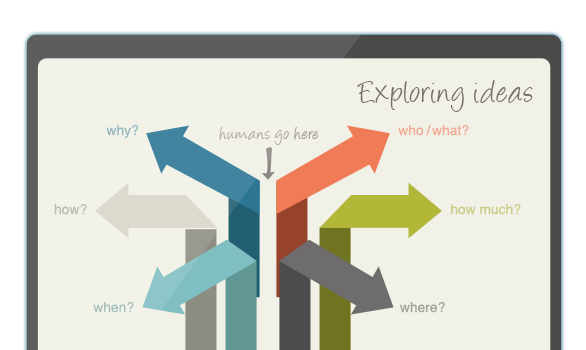

After all that research there's going to be a lot of ideas that we want to explore quickly - working collaboratively is a great way to do that.
I like this way of working because everyone is involved in the process of identifying a solution, team members feel included and that they have had their voices heard. Workshops get everyone involved in the design process early, getting input from different disciplines such as visual designers and developers. They’re also a great tool for bringing consensus on the approach amongst the project team and helping to generating a shared vision for the UX design work.

Sharing ideas early and often helps us identify good ideas quickly and sketches are an effective and inclusive way to do that.
Nothing generates lots of design ideas and gathers feedback quicker than sketching out hand drawn ideas in a collaborative environment. These sketches help visualise and clarifying thinking amongst the team, allowing decisions to be made quickly on which ideas to pursue in higher fidelity and which ones to adapt or discard. Topographic and low fidelity wireframes then take the sketched ideas into the next stage of exploration.
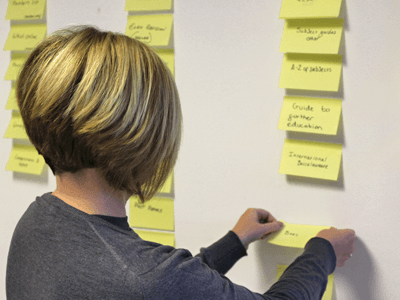
Knowing how individual screens or interactions will work is great but how will the product work as a whole? How will users find their way around it?
Great for ensuring key tasks are easy to accomplish, I employ user journey maps to identify how users currently move through a product. Showing the steps taken, the decisions made in the process and the outcome for each of those decisions. By exploring this, I can design a journey that ensures our users can flow through it effectively and accomplish the tasks they need/want to.
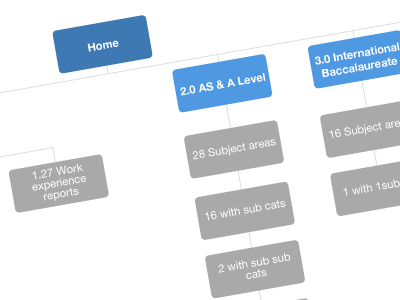
Content and how it is organised should reflect the needs of your users. I use information architecture tools and techniques to reveal the optimal content structure for you and your users.
Your business and your users both have specific goals and desires when using your product. I use information architecture reviews to explore ways to navigate to and through that information in a way that makes sense to the users. Making content as simple to find as possible.
I also use site mapping and content audits to explore opportunities to improve the organisation and quality of content.
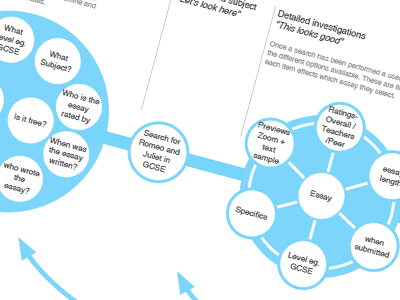
We all have expectations and learned behaviours that we bring with us when we interact with any product. Using task models to understand what those expectations are, we can design experiences that fit with how people expect them to work.
Understanding the tasks and activities that a user will need to do to fulfill their goals is important. But Just as important is to try to understand the way that the user is feeling about that task at that stage.
Clearly identifying tasks and activities, when considered in conjunction with the users mental model at a certain point in the process, these models help identify where users need to be supported through these steps.
A compelling technique which affords the stakeholders a real understanding of the process and functionality required to help the user.
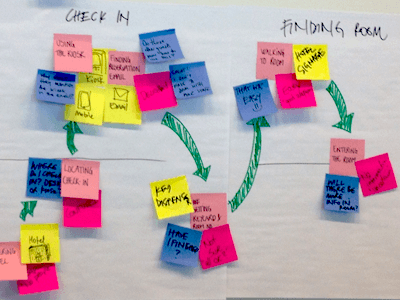
With a wider remit than single tasks, experience maps cover the entire journey for the user with every touch point with your product or service.
A visual representation of the process that users go through before, during and after using a product or service, a customer experience map covers the every point of contact the user has with your business. Providing a wider view of all the customers experiences, these maps are a valuable tool for identifying areas for improvement and gaps where changes or new products could add value.

Short, vivid descriptions or more detailed research driven tools, personas are a great tool for bringing the users to life for teams working on a project.
Based on real users, personas are fictional characters created to represent the real users, their attitudes and behaviours. Creating personas collaboratively really gets the project team thinking about who the users are and their goals and desires and makes good use of all the knowledge they already have about your users. As representations of real user behaviours, personas afford the project team the ability to step into the users shoes when looking at tasks and flows.